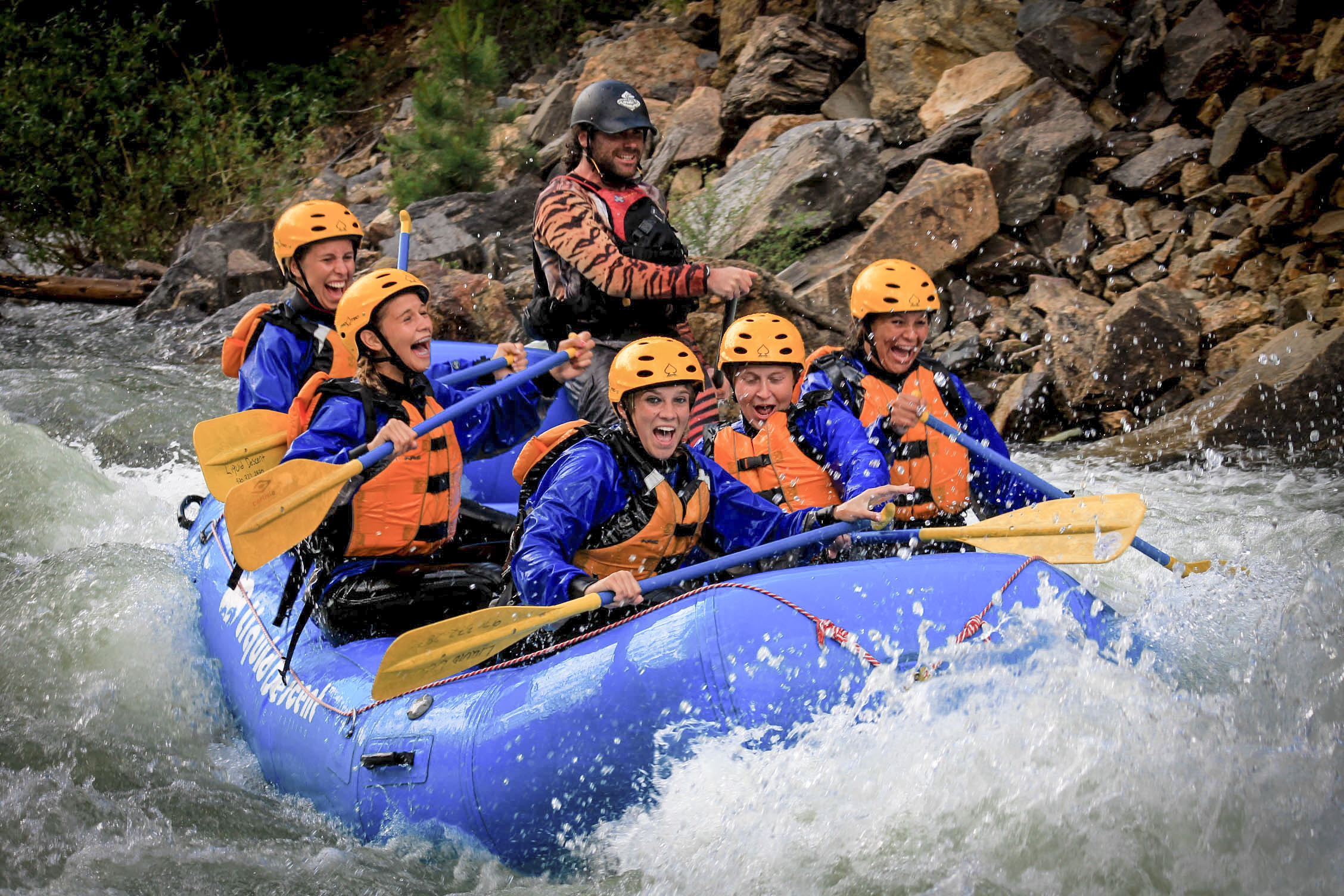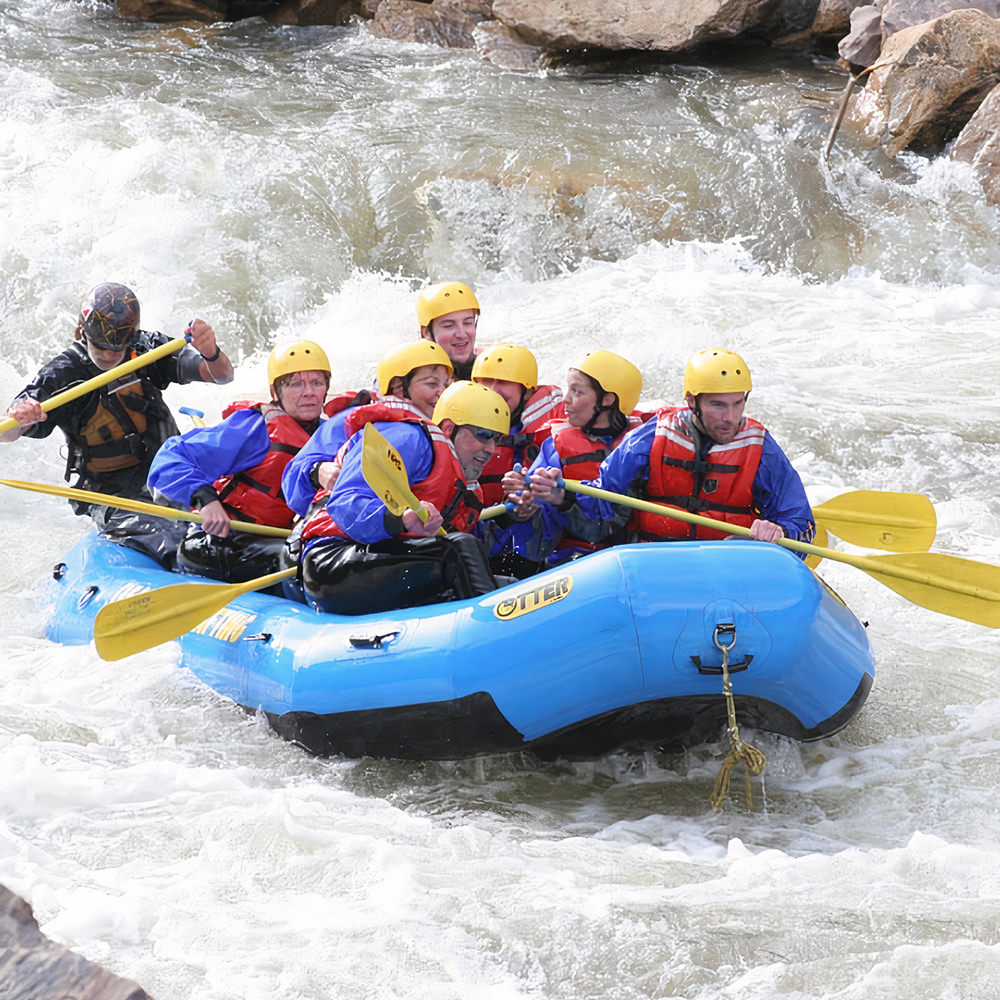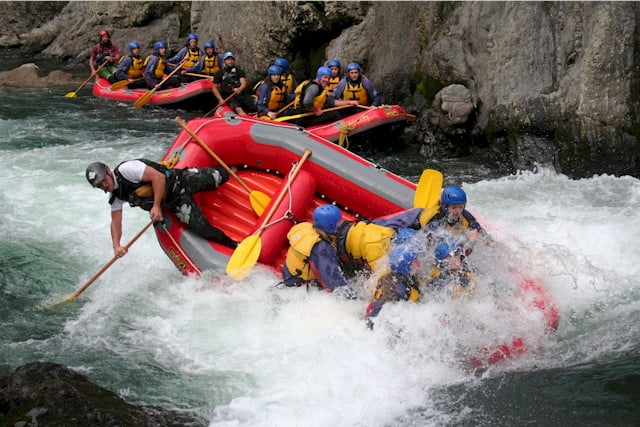Expert's Overview to White Water Rafting Colorado Rapids
Expert's Overview to White Water Rafting Colorado Rapids
Blog Article
The Ultimate Journey: Water Rafting Tips and Techniques
Beginning on a water rafting journey is an awesome experience that requires a mix of ability, prep work, and respect for nature's formidable forces. As the thrill of the river drives you forward, navigating via spins and turns, the art of water rafting introduces itself as a test of both physical prowess and mental skill.
Important Gear for Water Rafting
To make sure security and comfort during water rafting expeditions, it is crucial to equip oneself with the necessary gear tailored to this daring activity. The first and most important tool is a well-fitted individual flotation protection device (PFD) or life jacket. This is non-negotiable for all rafters, as it provides buoyancy in case of unexpected immersion in water. Additionally, a durable headgear is necessary to secure versus head injuries, particularly in harsh waters or if shaken off the raft.
In addition, proper footwear is important for keeping good hold and securing the feet from slippery surface areas or sharp rocks. Neoprene booties or water footwear are suggested for this purpose. It is likewise recommended to use quick-drying garments, such as a wetsuit or rash guard, to regulate body temperature and avoid hypothermia in cool water conditions.
Finally, a dependable paddle is essential for steering through the water properly. It ought to be lightweight yet durable to withstand the roughness of rafting. By purchasing these essential pieces of gear, rafters can enjoy their experience on the water with confidence and peace of mind.
Selecting the Right Rafting Path
When intending a water rafting journey, selecting the ideal rafting route is important for a secure and satisfying experience. Factors such as the level of trouble, water problems, and the length of the route must all be thought about before starting your journey.
Firstly, analyze your group's skill degree and experience. Different rafting routes are categorized based on problem degrees ranging from Class I (very easy) to Course VI (very challenging and dangerous) It is very important to choose a route that straightens with the capacities of all participants to ensure everybody's security and satisfaction.
Additionally, consider the water problems of the course. Some courses might have tranquil waters suitable for newbies, while others may have solid currents and difficult rapids that require advanced abilities. Researching the water degrees and possible hazards of the route in advance can aid you make an informed decision.
Finally, think about the length of the rafting path. Longer courses might require more time and endurance, so select a course that fits within your group's duration and physical abilities. By thoroughly picking the appropriate rafting route, you can establish yourself up for a remarkable and exhilarating journey on the water.
Security Safety Measures on the Water
Considering the value of choosing the appropriate rafting path for a satisfying and risk-free experience, it is vital to prioritize safety and security preventative measures on the water to mitigate prospective dangers and ensure an effective experience. Before starting a water rafting journey, make sure all participants put on site here effectively suitable individual flotation devices (PFDs) and safety helmets to protect against crashes. It is important to listen attentively to the overview's safety rundown, which generally covers paddling techniques, what to do in situation the raft turns, and exactly how to assist others if needed. Maintaining interaction with the guide and fellow rafters is vital during the trip to collaborate motions and respond immediately to any kind of signals or instructions. In the event of somebody falling too far, comply with the guide's instructions for swift and reliable rescue treatments. Be conscious of the water problems, such as barriers and rapids, and adapt your paddling methods accordingly to browse securely through the training course. By adhering to these safety and security preventative measures, you can boost the general experience and reduce potential threats while water rafting.
Understanding Paddling Techniques
Creating efficiency in paddling techniques is important for browsing via varying water conditions and making sure an effective water rafting experience. White Water Rafting Colorado. Appropriate paddling not only helps in guiding the raft effectively yet also adds to the total control and team effort required for a secure and satisfying trip
Among the basic paddling methods is the forward stroke. This stroke involves dipping the paddle blade fully right into the water visit this web-site and drawing it back along with the raft, supplying propulsion and steering. The in reverse stroke, on the other hand, is important for turning around or slowing down the raft. By understanding the forward and backwards strokes, rafters can efficiently regulate the speed and instructions of the raft.

Tips for Handling Rapids Like a Pro
To excel in navigating difficult river problems, experienced water rafters use their mastered paddling techniques with accuracy and finesse when dealing with rapids like skilled experts. This rhythm aids the boating maintain its course and stability among the stormy waters.

Conclusion
In final thought, water rafting needs essential equipment, mindful path selection, security preventative measures, understanding paddling strategies, and dealing with rapids with proficiency. By following these methods and tips, adventurers can make certain a effective and enjoyable rafting experience on the water.

Taking into consideration the significance of selecting the appropriate rafting path for a pleasurable and safe experience, it is essential to focus on security precautions on the water to minimize potential threats and guarantee a successful experience. Inevitably, refining paddling techniques is essential to a exhilarating and effective water rafting adventure.
In final thought, water rafting needs vital equipment, mindful path choice, safety precautions, grasping paddling techniques, and taking care of rapids with know-how.
Report this page